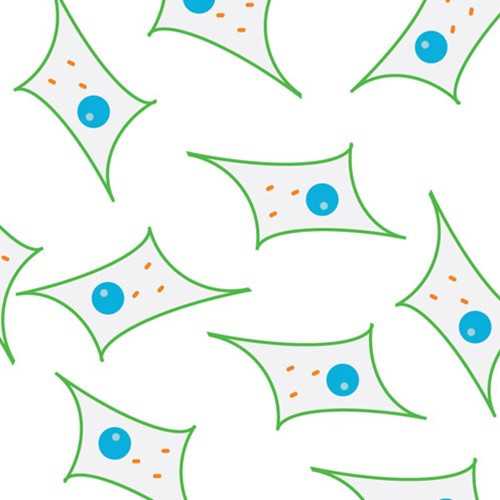Cre4 rho-0#11 Cell Line
This cell line is a rho-0 derivative of the Cre4 cell line (Cat. ESA109). Cre4 cells were induced to lose their mtDNA by propagation in the medium containing 5 ug/ml EtBr. One of the resulting clones demonstrated an absence of mtDNA as determined by both PCR and Southern blotting and was designated Cre4 rho-0#11.
From the laboratory of Mikhail F Alexeyev, PhD, University of South Alabama.
This cell line is a rho-0 derivative of the Cre4 cell line (Cat. ESA109). Cre4 cells were induced to lose their mtDNA by propagation in the medium containing 5 ug/ml EtBr. One of the resulting clones demonstrated an absence of mtDNA as determined by both PCR and Southern blotting and was designated Cre4 rho-0#11.
From the laboratory of Mikhail F Alexeyev, PhD, University of South Alabama.
Specifications
| Product Type: | Cell Line |
| Cell Type: | Embryonic fibroblasts |
| Source: | Mouse E13.5 Embryo |
| Organism: | Mouse |
| Morphology: | Spindle-shaped at confluence |
| Biosafety Level: | BSL 1 |
| Subculturing: | Split 1:4 every 3 days |
| Growth Conditions: | DMEM/10% FBS/ 1 mM pyruvate, 50 µg/ml uridine |
| Cryopreservation: | Media + 10% DMSO |
| Comments: | Slow- Growing |
| Storage: | LN2 |
| Shipped: | Dry Ice |
Provider
From the laboratory of Mikhail F Alexeyev, PhD, University of South Alabama.
Comments
Cre-TM mice (JAX 004682, B6.Cg-Tg(CAG-cre/Esr1)5Amc/J) were intercrossed with Lig3LoxP mice (Nature 471(2011) 240-244) to provide tamoxifen-inducible cre expression driven from the actin promoter. Lig3Cre-TM mouse embryonic fibroblast (MEF) cell cultures were prepared from E13.5 embryonic mesenchyme. Cells were allowed to proliferate in T-25 tissue culture flasks at 37 °C in a humidified CO2-regulated (5%) incubator and were immortalized with a retroviral construct 3315, which encodes SV40 large T antigen (J. Biol. Chem. 288 (2013) 26594-26605) and selected depending upon their ability to form colonies. One clone was selected for its superior growth characteristics and designated Cre4. This clone was propagated in the presence of 5 µg/ml EtBr for three weeks and cloned. One of the clones demonstrated an absence of mtDNA as determined by both PCR and Southern blotting and was designated Cre4 ρ0#11.
References
- Shokolenko IN, Fayzulin RZ, Katyal S, McKinnon PJ, Wilson GL, Alexeyev MF. Mitochondrial DNA ligase is dispensable for the viability of cultured cells but essential for mtDNA maintenance. J Biol Chem. 2013 Sep 13;288(37):26594-605.
- Spadafora D, Kozhukhar N, Chouljenko VN, Kousoulas KG, Alexeyev MF. Methods for Efficient Elimination of Mitochondrial DNA from Cultured Cells. PLoS One. 2016 May 2;11(5):e0154684.
If you publish research with this product, please let us know so we can cite your paper.


